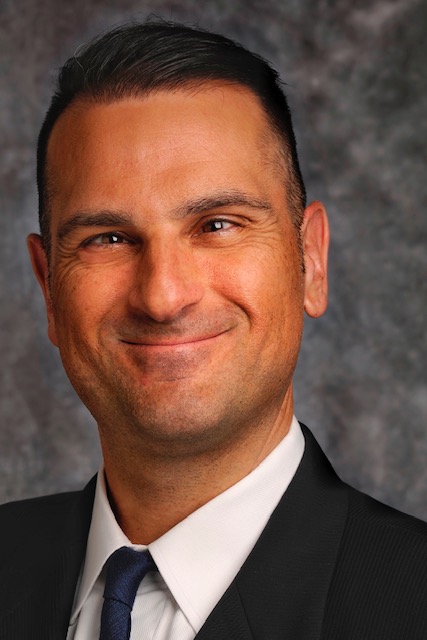A group of companies, led by Macom and Semtech, have launched a multi-source agreement (MSA) to offer an alternative to using a digital signal processor (DSP) in high-speed client-side optical modules.

The Open Eye MSA is developing a set of specifications for optical modules that use 50-gigabit 4-level pulse-amplitude modulation (PAM-4) signals whereby only analogue clock and data recovery (CDR) circuitry is required at the receiver.
By using the CDR instead of a PAM-4 DSP, the optical module will consume less power, have lower latency and be less costly to make, says the MSA.
To ensure interoperability, however, module makers using a PAM-4 DSP will need to meet the new MSA specification.
MSA motivation
The IEEE’s 50-gigabit PAM-4 specification was created several years ago before hardware existed, says Marek Tlalka, director of product marketing, high-performance analogue at Macom.
The IEEE specifications assumed that the received signal would be severely distorted such that the ‘eyes’ would be closed when sampled and displayed on an oscilloscope. Recovering the transmitted 4-level encoded signal would thus be a challenge.
“They had to plan for the worst-case transmitters and receivers which, in the end, led them to define the specifications such that a DSP would be required for signal recovery,” says Tlalka.
 Marek Tlalka, MacomBut what has transpired is that the transmitters and receivers now used in high-speed modules have much better optical performance than originally anticipated. “You can get a nice eye on the receive side such that an analogue CDR is quite capable of the recovery,” says Tlalka.
Marek Tlalka, MacomBut what has transpired is that the transmitters and receivers now used in high-speed modules have much better optical performance than originally anticipated. “You can get a nice eye on the receive side such that an analogue CDR is quite capable of the recovery,” says Tlalka.
Both Semtech and Macom, which already have such CDR solutions, went independently to their customers to promote such PAM-4 DSP-free module designs. The customers responded favourably to the claimed power, cost and latency savings, but the two companies were told that a standard was needed to generate industry backing and ensure wide availability of components and modules.
The led Macom and Semtech to found the MSA which now has 19 members. And since announcing the MSA in May, some 20 companies have enquired about joining. The companies include systems vendors, module makers, chip, and test companies.
The MSA’s current focus is on 50, 100, 200 and 400-gigabit single-mode module designs that have a reach of 500m to 2km. A draft specification, which involves the optical transmitter and receiver, is almost done, and the final version will be published in the autumn.
The MSA work will then address multi-mode module designs with the final phase tackling 100-gigabit PAM-4 (see table above).
Coexistence
The Open Eye MSA expects PAM-4 DSP modules to co-exist with its own modules.
“We want to be clear that we are not excluding DSPs,” says Timothy Vang, vice president marketing and applications at Semtech. “In this MSA spec, the analogue solution may have a power and a latency advantage, that is all.”
 Timothy Vang, SemtechMoreover, there are interface applications where a PAM-4 DSP chip will be needed. One example is for longer reaches, for data centre interconnect up to distances of 80km that are not coherent-based.
Timothy Vang, SemtechMoreover, there are interface applications where a PAM-4 DSP chip will be needed. One example is for longer reaches, for data centre interconnect up to distances of 80km that are not coherent-based.
Another is for applications where a ‘gearbox’ function is used to translate the electrical signal speeds, for example, from 25-gigabit non-return-to-zero (NRZ) to 50-gigabit PAM-4, or 50-gigabit PAM-4 to 100-gigabit PAM-4.
Issue of interoperability
Tlalka stresses that what the Open Eye MSA is doing is tightening the specification of the module’s optical transmitter: “That open eye can be recovered with an analogue CDR, it can also be recovered with a DSP.”
Inphi, a maker of PAM-4 DSP chips, says it has no current plans to join the Open Eye MSA.
Eric Hayes, senior vice president, networking interconnect at Inphi, agrees that with a wide-open eye, a DSP-based optical module will be compliant with the MSA. He also points out that with an open eye, less signal processing will be required and hence the power consumption will be less.
 Eric Hayes, InphiDSP-based modules using older laser technology, however, may be IEEE compliant but not pass the Open Eye specification. “That is where you potentially have interop issues,” says Tlalka.
Eric Hayes, InphiDSP-based modules using older laser technology, however, may be IEEE compliant but not pass the Open Eye specification. “That is where you potentially have interop issues,” says Tlalka.
“What we believe is going to happen is that the DSP module makers will just have to modify the test procedure for their modules and they will become compliant,” says Tlalka.
Inphi says the current testing procedure for DSP-based optical modules that are IEEE compliant is simple and cost-effective.
“TDECQ-compliance measurement is a highly effective yet simple quantitative procedure already supported by all test equipment,” says Hayes. TDECQ - the transmitter dispersion eye closure, quaternary - is the test used for PAM-4 rather than a traditional eye mask used for NRZ signals.
By removing the TDECQ requirement and using an eye mask to measure the PAM-4 received eye, the Open Eye MSA is forcing optical transceiver module makers to have to implement an extra layer of testing, adding cost, says Hayes.
Tlalka says the MSA does not expect the PAM-4 DSP module makers to adopt two test procedures, nor will two be necessary. “They will just have to test once [using the Open Eye test procedure],” he says.
There are already test companies as part of the Open Eye consortium and two more are joining as part of the 20 companies that have expressed an interest in joining the MSA.
The hyperscalers' preference
Inphi claims that the hyperscalers have a preference for PAM-4 DSP-based modules. This is also a view shared by Dale Murray, principal analyst at LightCounting, the market research firm.
“We do see that hyperscalers prefer to stay with DSP-based modules,” says Hayes. “With DSP-based modules, hyperscalers and their supply chains can take advantage of lower bandwidth optics, which is already in high volume production for several years.”
 Dale Murray, LightCounting
Dale Murray, LightCounting
DSP-based solutions also provide value to customers, such as diagnostics, health and performance monitoring, and firmware upgrades in the field. “These features could lower the total cost of ownership for the hyperscalers and reduce the operational expenditure,” says Hayes.
“I think they are going to go with what is the cheapest and lowest power,” counters Tlalka. “A generic statement is easy to make that they will stay with what is out there, but if they start getting modules that are tens of per cent lower cost and tens of per cent lower power, I think they will pretty quickly change their minds”
“We heard from the end users what they wanted the technology to enable in terms of latency, power and cost,” adds Semtech’s Vang. “We are hopefully being responsive as an ecosystem to the big data centre market.”
“At the end of the day, it will be up to the MSA players to make Open Eye a success,” says LightCounting's Murray.